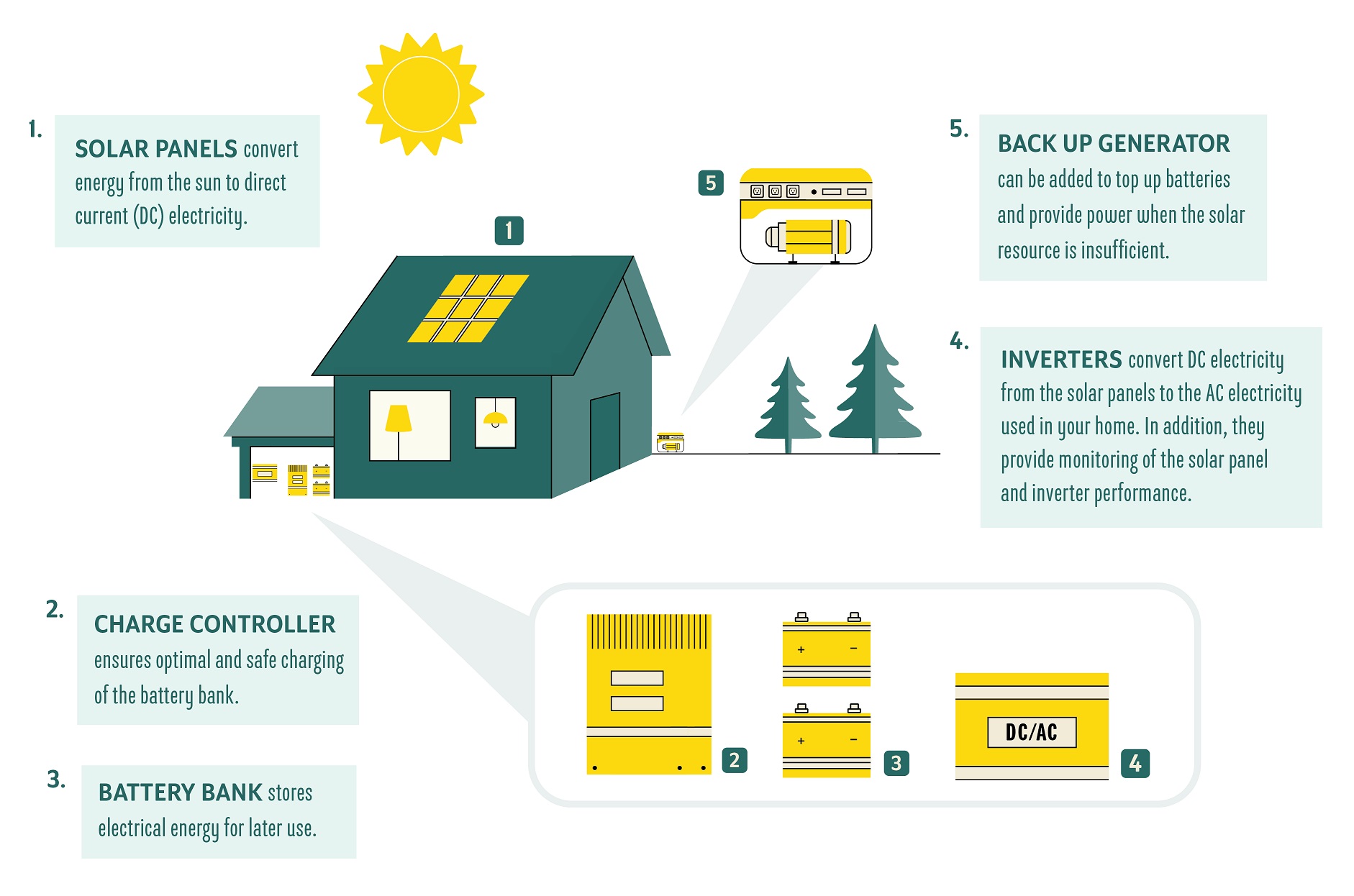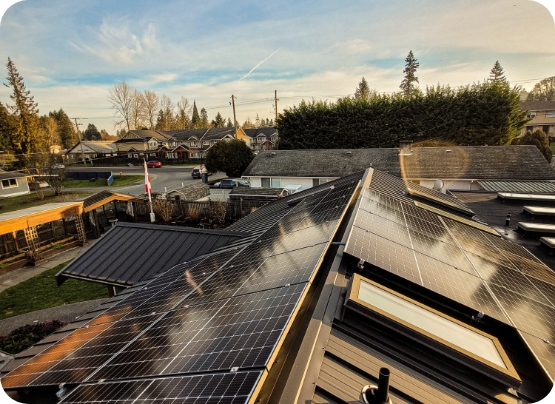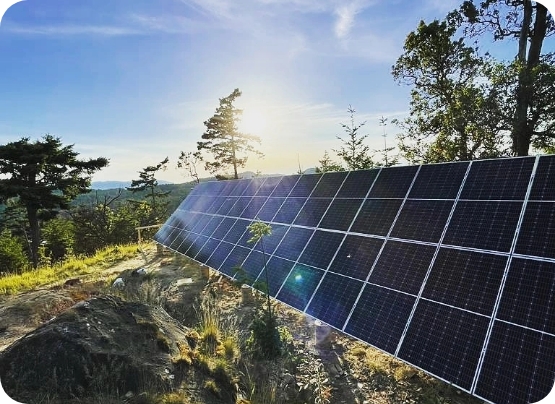Renewable energy for off the beaten track
Off-grid installations are suitable for remote areas – everywhere utility power is not available.

Download off-grid solar energy system info sheets
What you need to know
Loads
The electrical loads are the starting point. They determine the size of the system components and ultimately the cost. It is essential to plan ahead and get this part right as increasing the system capacity in the future is more costly than doing it properly the first time. To start the process, we will provide a load worksheet and work with you to complete it as accuratly as possible. It is very important to spend as much time on this as necessary and think through your electrical needs – now and in the future. Your electrical load is determined by the size of the load and the amount of time it operates.
Days of autonomy
Days of autonomy is a term used in off-grid design to describe the amount of time (usually in days) you intend the system to run your loads directly off your batteries before they need to be charged. This is the primary factor in determining the size of the battery bank you need. Usually, 3 to 4 days is a common target and is important for systems where there will be little or no sunlight to charge the system at certain times of the year.
Energy storage
The size of your energy storage system or battery bank is determined by your loads and days of autonomy. Storage is by far the most expensive component of an off-grid system and the reason your load and days of atonomy need to be carefully planned. We will help you determine the best battery type to meet your needs based on your energy use, budget and maintenance requirements. We supply a range of battery types from flooded lead-acid batteries to lithium-ion.
We design your solar array and/or other renewable energy generators (e.g. Wind or Micro-Hydro) to provide as much energy as possible into your energy storage to met your needs and budget. The size or capacity of this component is very location specific and depends heavily on site conditions like sun exposure.
Generator
In most year-round off-grid applications on the West Coast of BC, an additional source of energy is required to top up batteries when there is not enough solar energy to charge the batteries fully. In most cases, a generator is used and can be designed for an automatic or manual startup. Proper selection of generator size and type is important to ensure maximum compatibility with your system.
Off-grid example systems
The information below is an example of a possible system.
An estimate will be provided for each individual project.
| System/ Features | OFF-GRID 1.0 | OFF-GRID 2.0 | OFF-GRID 3.0 |
|---|---|---|---|
| Solar Panels | 3 | 9 | 18 |
| Solar Power | 1.3 kW | 3.8 kW | 7.7 kW |
| Battery Bank | 7.3 kWh | 18.4 kWh | 36.7 kWh |
| Battery Type | AGM | AGM | AGM |
| Winter Energy Production | 1 kWh/day | 3.1 kWh/day | 6.2 kWh/day |
| Appliances | Lights & Laptop | Lights, Laptop, Fridge & TV | Lights, Laptop, Fridge, Freezer, TV, Water Pump (1hp) |
| Autonomy | 3 Days | 3 Days | 3 Days |
FAQs about off-grid systems
Can I go off-grid?
Yes! But you may not want to….
Of course it’s technically possible to go off-grid but in reality, for most people, it is cost prohibitive. In many cases once the various systems are explained, people who are already on the grid receive more bang for the buck by staying on the grid and installing a grid tie system. Learn more about the various solar energy systems here.
What is the environmental impact of solar panels?
Every form of power generation requires energy to manufacture. The benefit of solar panels is that after they are installed, they produce zero emissions and they can last from 20 to 30 years. The typical PV system takes 2-½ years of operation to generate the energy required to manufacture it.
Interested in going off-grid?
Learn more about which off-grid solar energy system is best for your property.
Off-grid solar energy installations
Learn more about the off-grid solar energy systems we design and install by reviewing some of our work.


